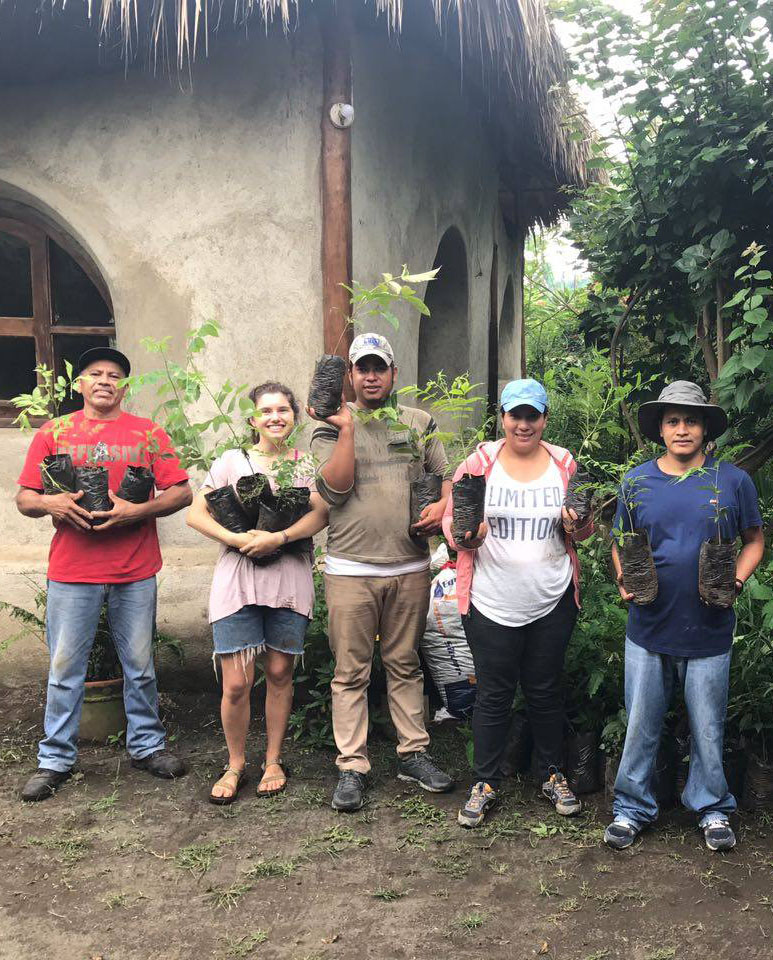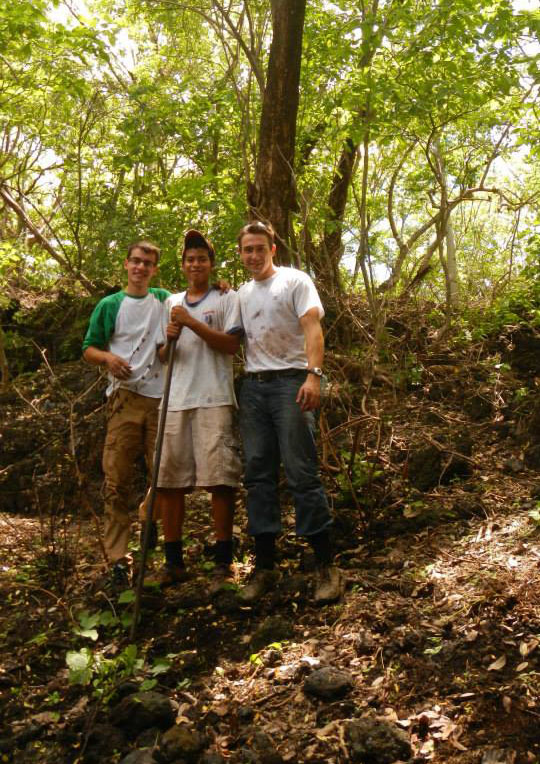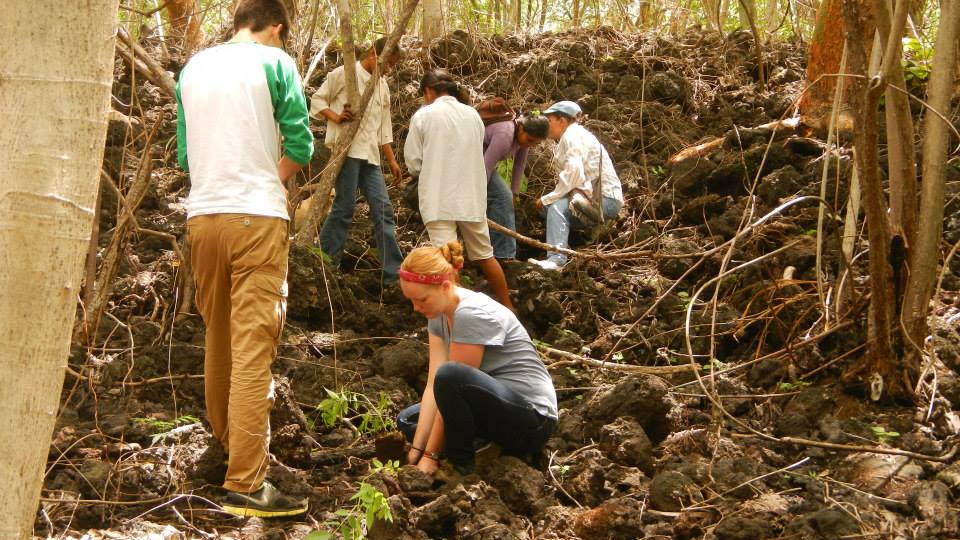Just two years ago the ridges in the photo below were a patchwork of small farms, mostly dragon fruit as this area is affected by fumes from the Masaya Volcano which affects what can be grown, and wooded patches. The rate of uncontrolled deforestation has been incredible and vast plantations of dragon fruit grown for export have taken the place of the last remaining woods. In the case of Palo Solo, where we have our 140 acre nature reserve (Canada Honda), deforestation has led to the drying up of local springs as well as the destruction of windbreaks along the ridge. The people of this very poor community are totally dependent on firewood for cooking so they have to go farther and father afield to find it.
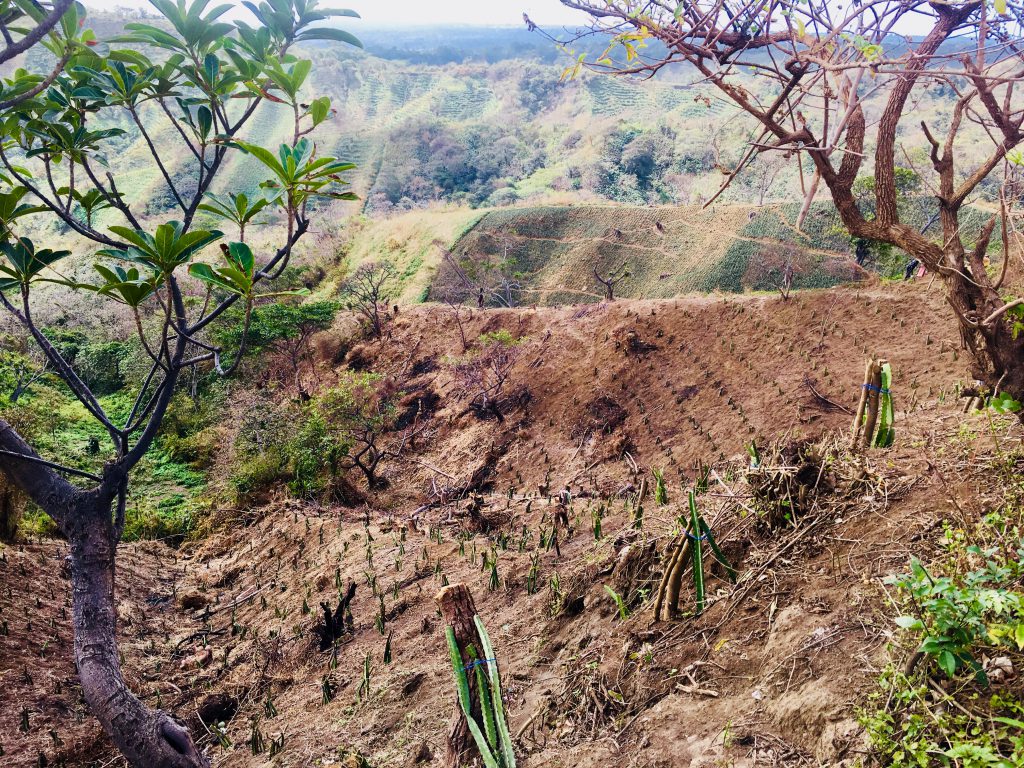
This area was clear cut – not by poor local farmers – but to grow dragon fruit for export
Our response has been to work together with the community of Palo Solo
- Firstly on reforesting both in our nature reserve and along the ridge to form a windbreak for the houses. Thousands of trees have been planted in 3 years and we are always careful to ensure they are native trees which will withstand the unusual conditions (the passing overhead of volcanic fumes.) Down in the valleys where the fumes are less prevalent we can plant a wider variety of native trees including nisperal, ceiba, guanacaste.
- We have also set aside several acres and planted a fast growing tree (called chirca) which provides good firewood. In a couple of years local people will have access to this supply.
- Local people have access to the springs in Canada Honda

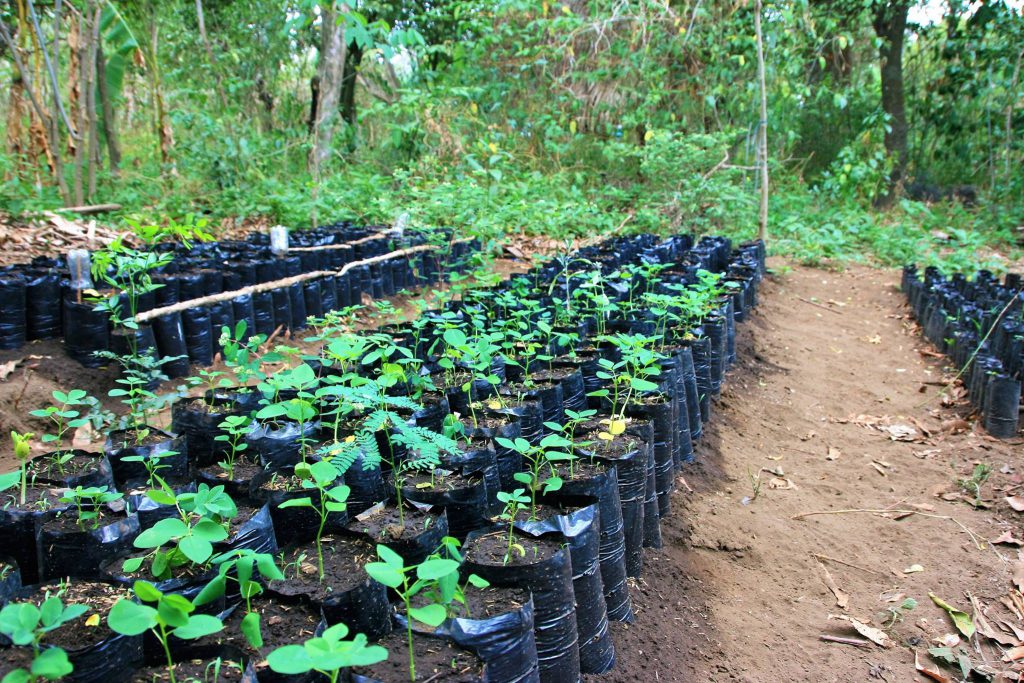
Tree nursery 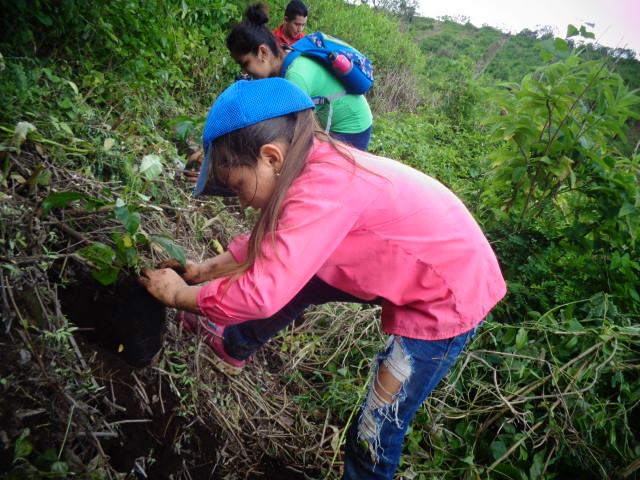
Everyone gets involved!
Marlon Reyes, our former head of the teachers made the following video illustrating community member’s dedication to reforesting in Canada Honda to help protect the eco-system in the Palo Solo barrio. Youth and adults have worked endlessly in spreading the word and planting over 3000 trees. Take a look and get involved!
If you are interested to Volunteer with us on this project (or other reforestation projects) please bear in mind the following timetable
- End of dry season – March/April – collection of seeds
- When rains begin – beginning of May – plant seeds in containers (some recycled) in the tree nursery
- When rains get heavier – July through to December – then we can plant out seedlings, some from last year


